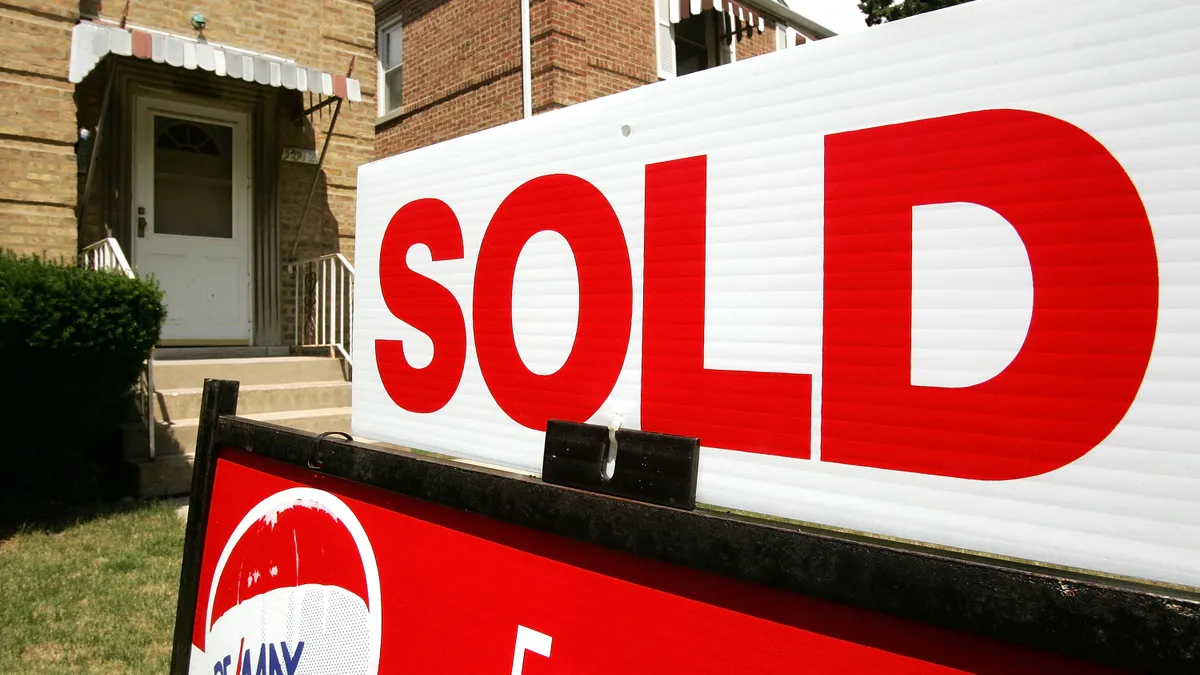Dive Brief:
- Women in the U.S. could afford 18% more of homes for sale if they made as much money as men, according to a recent analysis by Zillow. “Because owning a home is the dominant avenue for building wealth for most Americans, this disparity has a compounding impact,” it says.
- This gap in access to homeownership has further ramifications for women's affluence, researchers say. And when they do buy: “The female financial return on buying the home is lower in that women buy for a higher price and sell for a lower price,” said Kelly Shue, professor of finance at Yale School of Management.
- That said, the overall gender pay gap is shrinking, which in turn ought to address the problem of home value disparities, the analysis in part concluded.
Dive Insight:
Homeownership is the foundation for building wealth for many people in the U.S. Yet certain demographic groups continue to lag in that pursuit, even though overall ownership rates are on the rise.
For instance, the National Association of Realtors recently reported that the U.S. homeownership rate had its largest-ever annual increase in 2020, but White families remained homeowners at a much higher rate than Hispanic American, Asian American or Black families, with the Black homeownership rate lower in 2020 than it was in 2010.
It’s both a historical issue and an ongoing trend. Racial barriers have for decades prevented Black families from having what many people consider a central piece of the American Dream. Discriminatory practices such as redlining – in which the Federal Housing Administration refused to insure mortgages in or near Black neighborhoods – have shaped racial wealth disparities and contributed to the homeownership gap, experts say. Looking ahead, the Urban Institute predicted last year that over the next two decades, the largest decline in homeownership rates will be among certain Black households.
For women, both affordability and home value disparities have negative impacts, the Zillow analysis highlights. Yale’s Shue further detailed women’s experience with the home buying and selling process. “If you think about buying a home, on average, people make money on their investment. [Women] were more likely to buy in locations and during time periods when prices in general in an area were high, and they sold when prices in an area were low,” Shue said. “The past couple of decades, single men have done better in terms of the timing and the choosing of where to buy and sell.”
And women, on average, still get paid less than men in the same jobs, and that lower salary makes it difficult for them to access available homes.
The extent of that gap varies by job type: Women working in the financial industry, education, health services, advocacy and pet care experience more significant disparities, according to the Zillow analysis.
It also depends on where in the U.S. a woman lives and works. The pay gaps in major metropolitan areas seem similar to the national gender pay ratio of 83%, according to a study of 2018 data from the American Association of University Women, with urban areas on average having slightly smaller gaps and rural areas having larger gaps. The study found that the metropolitan area with the smallest gender pay gap was Miami, with a ratio of 91%, and the widest was Detroit, at 72%. The largest average dollar gap between men’s and women’s median annual earnings was also found in Detroit, where men were paid $16,579 more annually than women.
Jun Zhu, a nonresident fellow with the Urban Institute’s Housing Finance Policy Center, noted the gender pay gap is closing “but it’s not fully closed.” Zhu pointed to a few factors contributing to that momentum, including that more women are heading households and gaining economic power. Strategies that could help women with homebuying include increasing the visibility and accessibility of homebuying resources, such as different types of down payment programs, Zhu said.
“If we can provide enough support for mortgage and down payment assistance, that will be a very good thing as a starting point,” Zhu said, adding that it will be “especially important” for female heads of the households who often have less income and are first-generation homebuyers.








